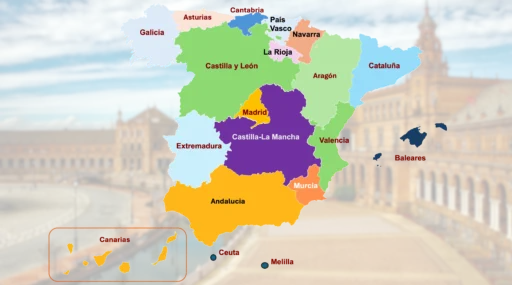Arroz con Gandules recipe, embark on a gastronomic journey to the vibrant island of Puerto Rico with the iconic Arroz con Gandules. This traditional dish, celebrated for its rich flavors and cultural significance, encapsulates the essence of Puerto Rican cuisine. In this blog, we will unravel the secrets of crafting the perfect Arroz con Gandules, exploring its key ingredients, cultural context, and guiding you through the step-by-step preparation to bring the spirit of Puerto Rico to your own kitchen.
Understanding Arroz con Gandules: A Puerto Rican Culinary Heritage:
Arroz con Gandules, often referred to as the national dish of Puerto Rico, is a flavorful rice and pigeon peas concoction that mirrors the island’s rich cultural tapestry. This beloved dish is a staple in Puerto Rican households and a star on festive tables during holidays and special occasions. The aromatic blend of rice, pigeon peas, and a medley of spices creates a symphony of flavors that is as comforting as it is festive.
Ingredients for Authentic Arroz con Gandules:
Creating an authentic Arroz con Gandules requires gathering the finest ingredients to capture the essence of Puerto Rican flavors.
For the Sofrito:
- Culantro (Cilantro): 1/2 cup, finely chopped, providing a robust and citrusy flavor.
- Ají Dulce Peppers: 1/2 cup, finely chopped, adding a mild, sweet heat.
- Green Bell Pepper: 1 medium-sized, finely chopped, for a fresh and slightly tangy flavor.
- Red Onion: 1 medium-sized, finely chopped, contributing sweetness and depth.
- Garlic: 4-6 cloves, minced, for aromatic intensity.
- Tomato Sauce: 1/2 cup, enhancing color and adding a savory element.
- Olive Oil: 1/4 cup, for sautéing and flavor infusion.
For the Rice and Gandules:
- Medium-Grain Rice: 2 cups, thoroughly rinsed, providing a fluffy texture.
- Pigeon Peas (Gandules): 1 can (15 oz), drained and rinsed, offering a nutty flavor.
- Chicken or Vegetable Broth: 3 cups, for cooking the rice with added depth.
- Sofrito Mixture: 1 cup, for flavoring the rice and creating a rich base.
- Sazón: 1 packet, a traditional seasoning blend for color and flavor.
- Bay Leaves: 2, for aromatic infusion.
- Salt and Pepper: To taste, enhancing the overall seasoning.
For Garnish and Serving:
- Cilantro: Freshly chopped, for a burst of freshness.
- Lime Wedges: For squeezing over the rice before serving.
Preparation: Crafting the Perfect Arroz con Gandules:
Let’s dive into the step-by-step process of creating an authentic Arroz con Gandules that captures the heart and soul of Puerto Rican culinary tradition.
Step 1: Prepare the Sofrito:
- Chop Ingredients: Finely chop the culantro, ají dulce peppers, green bell pepper, red onion, and garlic.
- Sauté in Olive Oil: In a large pot, heat the olive oil over medium heat. Add the chopped ingredients and sauté until softened.
- Add Tomato Sauce: Stir in the tomato sauce and cook for an additional 2-3 minutes, allowing the flavors to meld. Set aside 1 cup of this sofrito mixture for later use.
Step 2: Cook the Rice and Gandules:
- Rinse Rice: Thoroughly rinse the medium-grain rice under cold water until the water runs clear.
- Combine Ingredients: In the pot with the remaining sofrito mixture, add the rinsed rice, drained pigeon peas, sazón, bay leaves, and salt and pepper to taste.
- Pour Broth: Pour in the chicken or vegetable broth, ensuring it covers the rice mixture by about an inch.
- Bring to a Boil and Simmer: Bring the mixture to a boil, then reduce the heat to low, cover the pot, and let it simmer. Allow the rice to absorb the liquid and cook until tender, approximately 20-25 minutes.
- Fluff and Rest: Once the rice is cooked, fluff it with a fork and let it rest for a few minutes to allow any remaining liquid to be absorbed.
Step 3: Assemble and Garnish:
- Combine with Reserved Sofrito: Gently fold in the reserved 1 cup of sofrito mixture into the cooked rice and gandules. This adds an extra layer of flavor and color.
- Garnish and Serve: Sprinkle freshly chopped cilantro over the rice and place lime wedges on the side. The cilantro adds a burst of freshness, and the lime wedges offer a citrusy zing.
- Serve Warm: Arroz con Gandules is best served warm, allowing the flavors to meld and creating a delightful culinary experience.
Tips for Perfect Arroz con Gandules:
- Sofrito Mastery:
- Sautéing Carefully: Take the time to sauté the sofrito ingredients until they are softened and the flavors have melded. This forms the flavorful base of the dish.
- Rice Rinsing:
- Removing Excess Starch: Thoroughly rinsing the rice under cold water helps remove excess starch, preventing the rice from becoming overly sticky.
- Sazón Selection:
- Traditional Seasoning: Sazón is a key seasoning in Puerto Rican cuisine. You can use store-bought sazón packets or make your own blend with annatto, garlic powder, cumin, and coriander.
- Garnishing Creativity:
- Cilantro and Lime: Garnish the dish with freshly chopped cilantro for a burst of freshness and serve it with lime wedges to add a zesty kick.
- Fluffing the Rice:
- Fork Fluffing: Fluff the cooked rice with a fork rather than stirring it. This helps maintain the individual grains and prevents the rice from becoming too sticky.
Conclusion: Arroz con Gandules—A Puerto Rican Celebration:
In conclusion, Arroz con Gandules is more than a dish; it’s a celebration of Puerto Rican culinary heritage. As you savor the fluffy rice, nutty pigeon peas, and aromatic spices, let the warmth and vibrancy of Puerto Rican culture unfold on your palate.
Whether served as a comforting family meal or a centerpiece at festive gatherings, Arroz con Gandules embodies the heart and soul of Puerto Rican cuisine. So, gather your ingredients, infuse your kitchen with the scents of the Caribbean, and relish in the experience of savoring a plate of Arroz con Gandules—a true celebration of Puerto Rico’s culinary legacy.






































Leave a Reply